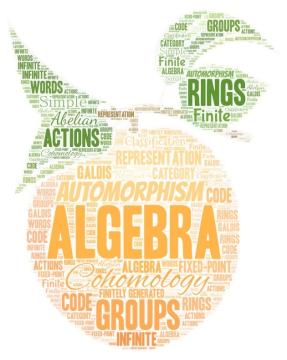
Giovedì 4 Settembre 2025 dalle ore 10:00, nel quadro del ciclo di seminari Al@Bicocca, Jim Belk (University of Glasgow) e Collin Bleak (University of St. Andrews) terranno i seguenti interventi
Relatore: Jim Belk
Titolo: Boone-Higman embeddings of Aut(Fn) and mapping class groups of punctured surfaces
Abstract: The Boone-Higman conjecture asserts that every finitely presented group with solvable word problem embeds into a finitely presented simple group. Such embeddings are now known for many classes of finitely presented groups, including arithmetic groups, right-angled Artin groups, Coxeter groups, hyperbolic groups, self-similar groups, Baumslag-Solitar groups, and free-by-cyclic groups. This talk will survey these results and then discuss some recent work with Francesco Fournier-Facio, James Hyde, and Matt Zaremsky that embeds each Aut(Fn) into a finitely presented simple group. This also yields Boone-Higman embeddings for braid groups and many of their generalizations, including mapping class groups of punctured surfaces and several families of Artin groups.
Relatore: Collin Bleak
Titolo: Strong Generation in Simple Vigorous Groups
Abstract: The simple vigorous groups are a broad class of groups of homeomorphisms of Cantor space that includes Thompson’s group V, its various generalisations and many others such as Nekrashevych’s groups of dynamical origin. Bleak, Elliott and Hyde (2024) proved that every finitely generated simple vigorous group is 2-generated, and, in this talk, we give several strong generation results for this class of simple groups. For example, we prove that if G is a finitely generated simple vigorous group, then G is generated by three involutions, that G is generated by an element of order m and an element of order n for any choice of m ≥ 2 and n ≥ 3, that G has a minimal generating set of size k for all k ≥ 2, that every non-trivial element of G is contained in a generating pair and that the direct power Gn is 2-generated for all n. These results are analogous to well-known results for finite simple groups, but of course the proofs in this context are quite different. One consequence of our results is that Thompson’s group V is (2, 3)-generated, which answers a question of Sapir (2017). Another consequence is that every finitely generated group quasi-isometrically embeds in a (2, 3)-generated simple group, generalising theorems of Hall (1974) and Bridson (1998). Joint with Casey Donoven, Scott Harper, and James Hyde.
Informazioni per partecipare
I seminari si terranno solo online a questo link
Per maggiori informazioni, visita il sito